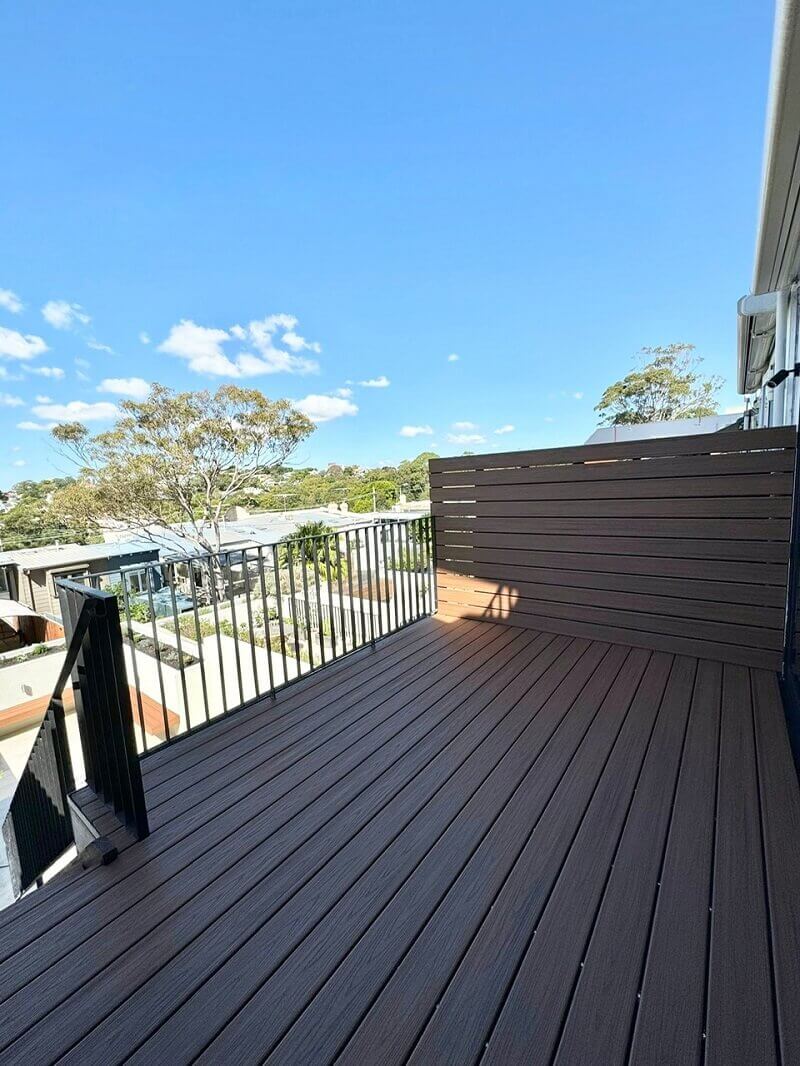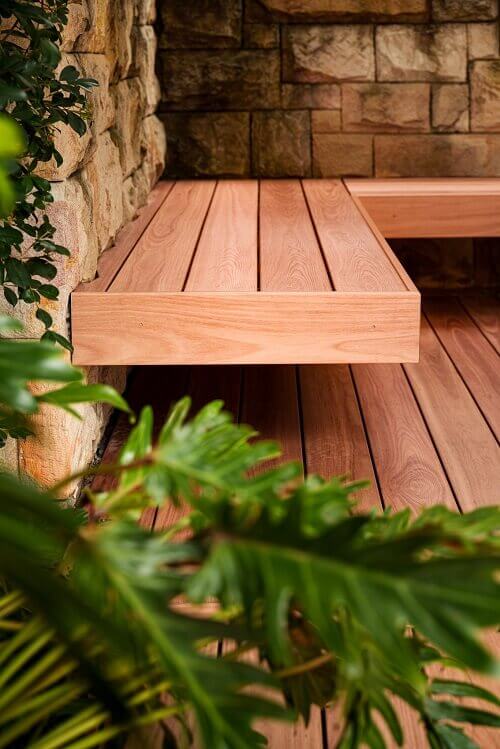Timber Vs Composite Decking | Pros & Cons

Introduction
When planning to build a deck, one of the most crucial decisions you'll make is choosing between timber and composite decking materials. Both options have their unique advantages and disadvantages, and understanding these factors can help you make an informed decision that best suits your needs, budget, and style preferences.
In this comprehensive guide, we'll explore the pros and cons of timber and composite decking, discussing factors such as durability, maintenance requirements, cost, aesthetic appeal, and environmental impact. By the end of this article, you'll have a clearer understanding of which material is the best fit for your outdoor living space.
Timber Decking: Pros and Cons
Timber decking has been a popular choice for centuries, valued for its natural beauty, warmth, and versatility. However, it also comes with certain drawbacks that are important to consider.
Pros of Timber Decking
- Natural Beauty: Timber decking offers an unmatched natural aesthetic, with unique grain patterns, colours, and textures that add warmth and character to your outdoor living space.
- Versatility: With a wide range of timber species available, you can choose from various colours, durability levels, and price points to suit your preferences and budget.
- Strength and Durability: High-quality hardwoods, such as Merbau, Spotted Gum, and Ipe, are known for their exceptional strength and durability, making them ideal for withstanding harsh weather conditions and heavy foot traffic.
- Customization Options: Timber decking can be stained, painted, or oiled to achieve your desired look and protect the wood from weathering and decay.
- Increased Home Value: A well-maintained timber deck can add value to your home, enhancing its overall appeal and marketability.
Cons of Timber Decking
- Regular Maintenance: Timber decking requires regular maintenance, including cleaning, staining, and sealing, to protect it from weathering, fading, and decay. This can be time-consuming and costly over the life of your deck.
- Potential for Splintering: As timber ages and weathers, it can develop splinters, which can be uncomfortable and even dangerous for bare feet.
- Susceptibility to Damage: Timber decking is susceptible to damage from moisture, insects, and rot, which can compromise its structural integrity and shorten its lifespan.
- Higher Lifecycle Cost: While the initial cost of timber decking may be lower than composite, the ongoing maintenance and potential for replacement can result in a higher overall cost over the life of your deck.
- Environmental Concerns: Some timber species, particularly those from non-sustainable sources, can have a negative environmental impact, contributing to deforestation and habitat loss.
Composite Decking: Pros and Cons
Composite decking has gained popularity in recent years as a low-maintenance and durable alternative to traditional timber decking. However, it also has its own set of advantages and disadvantages to consider.
Pros of Composite Decking
- Low Maintenance: Composite decking requires minimal maintenance compared to timber, with no need for regular staining, sealing, or painting. Simple cleaning with soap and water is usually sufficient to keep your deck looking its best.
- Durability: Composite decking is designed to withstand harsh weather conditions, resisting fading, staining, and damage from moisture, insects, and decay. Many composite products come with warranties of 25 years or more.
- Splinter-Free Surface: Unlike timber, composite decking maintains a smooth, splinter-free surface, providing a comfortable and safe environment for barefoot walking.
- Eco-Friendly Options: Many composite decking products are made from recycled materials, such as plastic and wood fibers, making them an environmentally friendly choice for your outdoor living space.
- Consistent Appearance: Composite decking offers a more consistent appearance than timber, with a range of colours and finishes that maintain their look over time without the need for staining or painting.
Cons of Composite Decking
- Higher Upfront Cost: Composite decking is generally more expensive than timber decking, with prices ranging from 30% to 50% higher for materials alone.
- Limited Customization: While composite decking comes in a variety of colours and finishes, it cannot be stained or painted like timber, limiting your ability to customise its appearance.
- Potential for Fading and Staining: Some composite decking products may fade or stain over time, particularly those at the lower end of the price spectrum. However, higher-quality composites are designed to resist these issues.
- Less Natural Appearance: Despite advancements in composite decking technology, some homeowners feel that composite materials lack the natural warmth and character of real wood.
- Temperature Sensitivity: Composite decking can become hot underfoot in direct sunlight, which may be uncomfortable for bare feet. Lighter colours and textured finishes can help mitigate this issue.
Factors to Consider When Choosing Between Timber and Composite Decking
When deciding between timber and composite decking, consider the following factors:
1. Maintenance Requirements
If you prefer a low-maintenance option and don't want to spend time and money on regular upkeep, composite decking may be the better choice. However, if you enjoy the process of maintaining your deck and appreciate the natural aging of wood, timber decking may be more suitable.
2. Budget
Consider both the upfront and long-term costs of each material. While composite decking has a higher initial price tag, its low-maintenance properties can result in cost savings over time. Timber decking may be more affordable upfront, but the ongoing maintenance costs can add up.
3. Aesthetic Preferences
If you value the natural beauty and warmth of real wood, timber decking may be the best fit for your outdoor living space. However, if you prefer a more consistent and modern look, composite decking offers a range of colours and finishes to suit your style.
4. Durability and Lifespan
Consider the durability and lifespan of each material in relation to your local climate and intended use. High-quality hardwoods and composite decking materials are both known for their durability, but composites may have an edge in terms of resistance to weathering, insects, and decay.
5. Environmental Impact
If environmental sustainability is a priority, consider the sourcing and manufacturing processes of each material. Look for timber decking from responsibly managed forests and composite decking made from recycled materials to minimise your environmental impact.
Frequently Asked Questions
Is composite decking more expensive than timber decking?
Yes, composite decking is generally more expensive than timber decking, with prices ranging from 30% to 50% higher for materials alone. However, the low-maintenance properties of composite decking can result in cost savings over time.
Which decking material lasts longer, timber or composite?
Both high-quality hardwood timber and composite decking materials can last for decades with proper maintenance. However, composite decking is generally more resistant to weathering, insects, and decay, which can give it a slight edge in terms of longevity.
Can composite decking be painted or stained like timber?
No, composite decking cannot be painted or stained like timber. The colour and finish of composite decking are inherent to the material and cannot be changed. However, composite decking comes in a range of colours and finishes to suit various style preferences.
Is composite decking more environmentally friendly than timber?
Many composite decking products are made from recycled materials, such as plastic and wood fibers, making them an eco-friendly choice. However, the environmental impact of timber decking depends on the sourcing and management of the forests from which it is harvested.
Can I mix timber and composite decking in the same project?
Yes, you can mix timber and composite decking in the same project to create unique designs and patterns. However, it's essential to consider the different expansion and contraction rates of the materials and to use appropriate fasteners to ensure a stable and long-lasting deck.
Conclusion
Choosing between timber and composite decking ultimately depends on your priorities, budget, and personal preferences. Both materials have their unique advantages and disadvantages, and understanding these factors can help you make an informed decision that best suits your needs.
If you value natural beauty, versatility, and affordability, timber decking may be the right choice for you. However, if you prioritise low maintenance, durability, and consistent appearance, composite decking may be the better option.
At Timbaland Carpentry, our experienced team is dedicated to helping you select the perfect decking material for your outdoor living space. We offer a wide range of high-quality timber and composite decking options, and our skilled craftsmen ensure expert installation and attention to detail.
Contact Timbaland Carpentry today to schedule a consultation and take the first step toward creating your dream deck. Our knowledgeable staff will guide you through the process, answer any questions you may have, and provide a detailed quote for your project.
Get a Free QuoteCall Us At
0455 499 464
